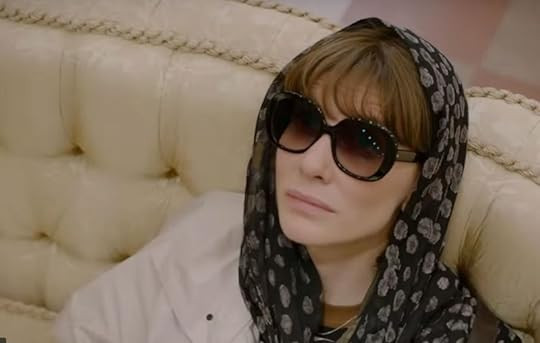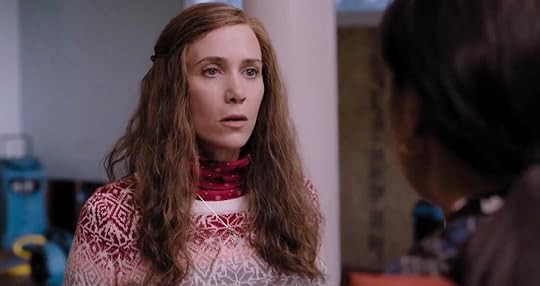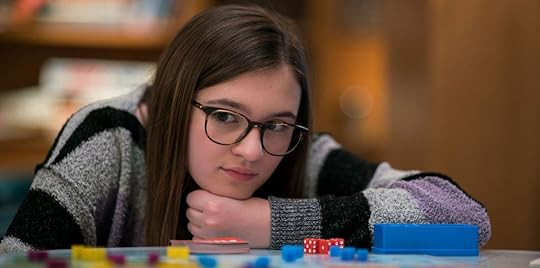Maria Semple’s “Where’d You Go, Bernadette” isn’t just a novel; it’s a vibrant, witty exploration of creativity stifled, societal anxieties, and the enduring bond between a mother and daughter. Inspired by a humorous phone call with her therapist Phil Stutz, Semple crafted a narrative that’s both deeply personal and universally relatable, particularly for anyone who’s ever felt out of sync with their surroundings. This review delves into what makes “Where’d You Go, Bernadette” a captivating read and why it resonates with audiences, examining its characters, plot, and unique narrative style.
Bernadette Fox, the protagonist, is a character study in contradictions. Described as anti-social and somewhat agoraphobic, she’s a former architect of considerable fame who has retreated into a world mediated by her online assistant, Manjula. Bernadette’s interactions, often through Manjula, are laced with hilarious diatribes, particularly about her adopted city of Seattle and its inhabitants, whom she affectionately terms “gnats.” This disdain for Seattle, much like Semple’s initial feelings upon moving there, forms a comedic backbone to the story. Her deliberate social withdrawal extends to her daughter Bee’s school, where she ensures her and her husband’s removal from all parent email lists, much to the other parents’ chagrin. These early characterizations, drawn from Semple’s own experiences, immediately establish Bernadette as an eccentric, yet deeply engaging figure.
 Cate Blanchett portraying Bernadette Fox in the 'Where'd You Go, Bernadette' movie adaptation
Cate Blanchett portraying Bernadette Fox in the 'Where'd You Go, Bernadette' movie adaptation
The house Bernadette inhabits further reflects her personality. The former Strait Gate School for Girls, a dilapidated reform school, serves as both a physical space and a metaphor for Bernadette’s own state of disrepair. Semple vividly portrays the decaying mansion, complete with a roof reminiscent of Notre Dame post-fire and confessionals that trap dogs rather than elicit revelations. Blackberry vines aggressively encroach upon the structure, mirroring the way Bernadette’s past and anxieties are encroaching on her present. The state of the house, with its unwashed dishes and general neglect, is a clear visual representation of Bernadette’s internal struggles, offering readers an early symbolic glimpse into her life.
The plot of “Where’d You Go, Bernadette” is set in motion by a promise. Bee, Bernadette’s bright and beloved daughter, achieves straight A’s and cashes in on a long-standing deal: any reward she desires. Her request? A family trip to Antarctica. For an agoraphobic Bernadette, this is akin to a nightmare. The prospect of navigating the infamous Drake Passage, which Bernadette imagines as an “aqueous hell,” amplifies her anxiety. This trip becomes the catalyst for Bernadette’s unraveling and, ultimately, her journey of self-discovery. It’s a scenario ripe with comedic and dramatic potential, perfectly balancing the lighthearted and more profound elements of the novel.
 Emma Nelson as Bee Branch in the 'Where'd You Go, Bernadette' film, capturing her youthful curiosity
Emma Nelson as Bee Branch in the 'Where'd You Go, Bernadette' film, capturing her youthful curiosity
Adding layers to the narrative are supporting characters like Audrey, Bernadette’s demanding neighbor, and Soo-Lin, Elgin’s ambitious assistant. Audrey’s insistence on Bernadette dealing with the encroaching blackberry vines leads to a comically disastrous interaction, highlighting Bernadette’s disdain for social norms and practical matters. Soo-Lin, with her apparent interest in Elgin and alliance with Audrey, introduces a subtle element of external conflict and potential disruption to Bernadette’s already precarious world.
True to its title, “Where’d You Go, Bernadette” sees its protagonist disappear. Following an escalating series of indignities, Bernadette absconds, leaving her family and Seattle behind. The novel then shifts to unraveling the mystery of her whereabouts and the circumstances leading to her departure. While the destination isn’t entirely a mystery, the question of Bernadette’s well-being and ultimate fate adds suspense and drives the latter part of the narrative.
 Kristin Wiig embodies Audrey, the neighbor character, in the movie 'Where'd You Go, Bernadette'
Kristin Wiig embodies Audrey, the neighbor character, in the movie 'Where'd You Go, Bernadette'
Semple employs an epistolary format, telling the story through emails, letters, FBI documents, and other forms of communication. This technique is skillfully framed by Bee, acting as narrator and compiler of these disparate pieces of information. This structure not only efficiently delivers plot details and backstory but also offers multiple perspectives on Bernadette and the unfolding events, enhancing the reader’s engagement and understanding of the characters.
The humor in “Where’d You Go, Bernadette” is a significant draw. Bernadette’s sharp wit and cynical observations, particularly about Seattle, are consistently funny. Semple’s writing style, drawing inspiration from her own life and emotions, imbues the narrative with authenticity and relatable humor. As Semple herself noted, writing the book became a way to process her own initial dislike of Seattle, transforming “toxic” feelings into comedic gold. This blend of personal experience and comedic delivery is a hallmark of Semple’s work.
 The Strait Gate School for Girls, serving as Bernadette's unique and dilapidated home in 'Where'd You Go, Bernadette'
The Strait Gate School for Girls, serving as Bernadette's unique and dilapidated home in 'Where'd You Go, Bernadette'
While the novel leans heavily on humor, it also touches on deeper themes of mental health and creative fulfillment. Bernadette’s quirks and anxieties are presented with empathy, making her a flawed but ultimately sympathetic character. The narrative subtly explores the impact of stifled creativity and the importance of finding an outlet for one’s passions. While some might argue for intervention or therapy for Bernadette’s “clinical malaise,” Semple presents her as she is: complex, brilliant, and in need of rediscovering her creative self.
The book’s setting, initially Seattle, and then Antarctica, provides contrasting backdrops to Bernadette’s internal journey. The filmmakers notably used a building in Pittsburgh to represent the Strait Gate house, and much of the film adaptation was shot there, adding another layer to the story’s visual interpretation. However, some plot elements, particularly the FBI’s somewhat convenient intervention, might stretch believability. Similarly, an unfortunate event during Bernadette’s disappearance, while present in the book, is largely omitted from the film, potentially altering the tone and impact of her journey.
Despite minor plot inconsistencies and a reliance on convenient resolutions, “Where’d You Go, Bernadette” is a thoroughly enjoyable read. The charm of Bernadette, her relationship with Bee, and the consistently funny narrative outweigh any shortcomings. Semple’s ability to blend humor with poignant observations about life, creativity, and human connection is what makes this novel so appealing. As Semple herself states, she aims for her writing to be both “true” and “entertaining,” often finding humor in even the darkest aspects of life. “Where’d You Go, Bernadette” successfully embodies this philosophy, offering readers a story that is both laugh-out-loud funny and surprisingly insightful.
For readers looking for a novel that is both lighthearted and thought-provoking, “Where’d You Go, Bernadette” is highly recommended. It’s a story about finding oneself, rediscovering passion, and the enduring power of family bonds, all wrapped in a uniquely humorous and engaging package. Whether you’re drawn to quirky characters, witty writing, or stories of self-discovery, Bernadette’s journey is one worth taking.
Further Exploration:
- Maria Semple’s Personal Website: https://www.mariasemple.com/
- Maria Semple on Twitter: https://twitter.com/_mariasemple
- Maria Semple on Instagram: https://www.instagram.com/mariasemple/
- Maria Semple on Facebook: https://www.facebook.com/AuthorMariaSemple/
- USA Today Interview: https://www.usatoday.com/story/life/books/2016/09/04/maria-semple-fall-books-preview/89415020/?fbclid=IwAR292xpDs8kmS5tfoLSPjfOJ1rbFw-wC0nTqEY8myl9klewSqptvMDDjMLo
- Book Expo of America (BEA) Video Interview: https://www.facebook.com/AuthorMariaSemple/videos/10154153224317387/?t=0

